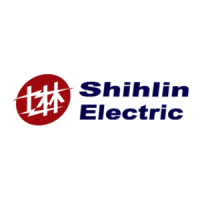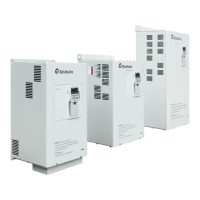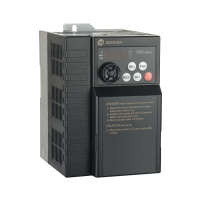Do you have a question about the Shihlin electric SF Series and is the answer not in the manual?
Details for identifying the inverter's model, specifications, and serial number.
Explains how to interpret the inverter model number and its components.
Covers voltage, current, capacity, and power supply characteristics.
Details on control methods, frequency ranges, torque, and environmental conditions.
Provides physical dimensions for installation planning and mounting.
Identifies key parts of the inverter, including nameplate and terminal blocks.
Instructions for safe and correct installation, wiring, and EMC compliance.
Guidance on setting the mini jumper for specific circuit configurations.
Recommendations for selecting compatible peripheral devices like switches and resistors.
Explains the different modes for controlling target frequency and motor starting.
Details the five working modes of the operation panel for monitoring and settings.
Step-by-step guides for PU, External, JOG, Communication, and Combined modes.
Instructions for performing initial tests and ensuring correct operation.
Configures output voltage boost for improved starting torque.
Sets the upper and lower limits for the inverter's output frequency.
Defines base frequency and voltage for V/F control characteristics.
Sets up multiple speed levels for different operational requirements.
Configures ramp times for smooth motor acceleration and deceleration.
Configures DC injection braking for motor stopping and holding.
Prevents motor stall by adjusting output current and frequency.
Configures serial communication protocols like Modbus and Shihlin.
Sets up analog inputs for voltage signals to control frequency.
Assigns functions to multi-purpose input/output terminals.
Configures PID loop for precise process control based on feedback.
Resets parameters to factory defaults or partial defaults.
Routine checks to ensure proper operation and identify potential issues.
Scheduled inspections during downtime for thorough checks.
Guidelines for the regular replacement of parts like cooling fans.
Procedures for measuring insulation resistance for safety.
Comprehensive list of all available parameters, their settings, and references.
Lists alarm codes, their causes, and troubleshooting steps for error resolution.
Common problems and their check points for diagnosis and resolution.
Details on optional accessories like operation panels and cables.
Records changes and versions of the manual.
| Frequency | 50/60 Hz |
|---|---|
| Storage Temperature | -20°C to +60°C |
| Series | SF |
| Input Voltage | 3-phase 380V~480V |
| Output Voltage | 3-phase 200~240VAC, 3-phase 380~480VAC |
| Power Range | 0.4kW~630kW |
| Control Method | V/F Control, Sensorless Vector Control |
| Overload Capacity | 150% for 60 seconds |
| Braking Unit | Built-in or External (optional) |
| Protection Functions | Overcurrent, Overvoltage, Undervoltage, Overload, Overtemperature, Phase Loss, Short Circuit |
| Communication | RS485, Modbus RTU, Profibus DP (optional) |
| Efficiency | 98% (typical) |
| Cooling Method | Forced air cooling |
| Operating Temperature | -10°C to +50°C |
| Humidity | 5%~95% (non-condensing) |












